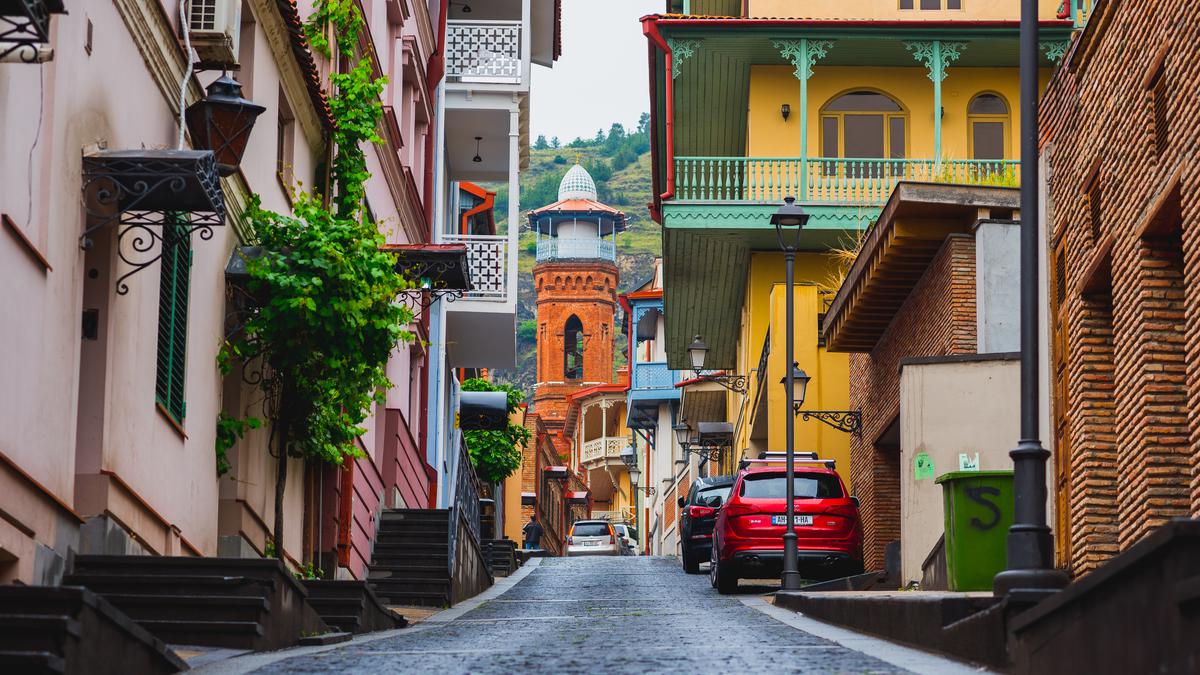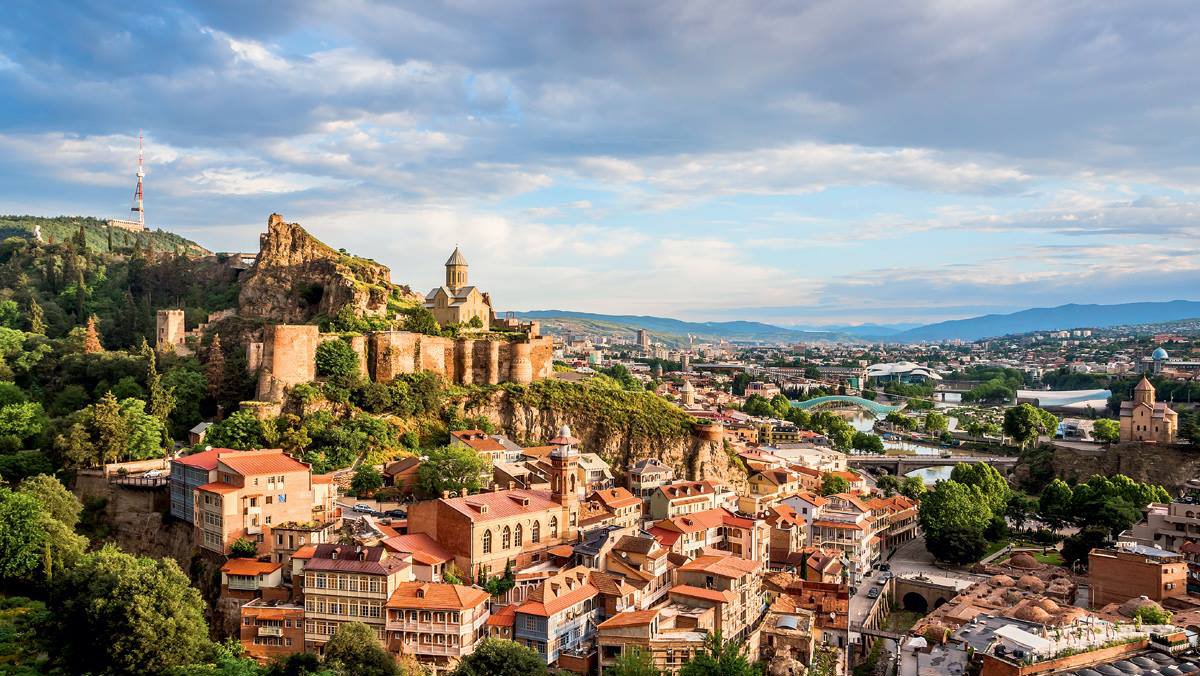
Riddles of old Tbilisi: an unusual city and its residents
Old houses of the Georgian capital, unique architecture, Tbilisi's "Italian" courtyards... The mysteries of the city and the people living here.
A walk through old Tbilisi⬇️
Georgian architecture is unique. Many buildings constructed in the 19th century have survived to this day. All you need to do is find them.
The thing is, street names and house numbering have changed multiple times. Two buildings standing next to each other may have the same number.
Choosing the "right" building is like solving a puzzle or riddle. It's very exciting!
Where is this house? A mystery...
On Geronti Kikodze Street in the Sololaki district, there are many interesting houses. According to the initial information, the design of one of them was prepared by the popular Tbilisi architect Alexander Ozerov. The house was supposedly numbered 3.
However, upon arrival, it turned out that there were two houses nearby - No. 1 and 3. They were beautiful and very similar to each other. Both had identical mascarons, which are decorations in the form of a human head, and the facade decoration was also identical.
According to a reference book from the 19th century, the families of the Guapashvili brothers lived in the house numbered one on Paskievich Street (the old name). Thus, there were two houses, but they were numbered with the same number. In modern times, they were given different numbers, causing a small confusion and a discrepancy with the historical address.
This information was confirmed by local residents.
Georgian architecture, Tbilisi courtyards, staircase to the sky
And here is the next house that turned out to be "Ozerovsky". According to the project of Alexander Grigorievich, a residential house number 6 was also built. By the way, from 1079 to 1885, Ozerov served as the city architect of Tiflis, and he built many buildings in the city.
All of them attract attention with their original design, just like the house that will be discussed. The stucco on the facade, columns, balconies with interesting railings... Currently, the facade of the house requires repair, but inside everything is not so bad.
A local resident tells the story of being acquainted with the son of the house owner, a hereditary doctor named Makarov. After the onset of Soviet power, the house was nationalized, and the former owners were allocated one small room.
Unfortunately, the wall painting did not survive in the house. Only the fireplaces in two apartments remained. To see them, you need permission from the owners.
In the past, people of different nationalities lived together like one big family, in joy and sorrow. This was facilitated by the traditional layout of Tbilisi houses - long balconies for several apartments, open verandas.
In the courtyard of the house, there is a spiral staircase. You can climb to the upper floors directly from the street, bypassing the main entrance. Similar staircases can be found in many Tbilisi courtyards.
Tbilisi courtyards are something unusual. They are often called "Italian courtyards" because it is noisy here, something is constantly happening, and life is boiling.
One of the old-timers, Nadir, tells about his childhood spent in these courtyards.
On the first floor, an intelligent family lived - Vakhtang and Nelli. The head of the family was the chairman of the city society of the blind. They often invited children living in the courtyard to their home, and arranged a "sweet table" for them - candies, fruits, and other goodies.
They never scolded the young footballers if they set up gates and hit the ball against their wall.
In recent years, the appearance of courtyards is changing, verandas are glazed. People have isolated themselves, closed themselves off from each other. This is also due to the problems of recent times, when it is recommended to observe quarantine and social distancing.
Each era leaves its mark on the lives of ordinary people. And there are practically no old neighbors left, all the people are new...

Sketches from a past life: the fate of an unusual Tbilisi resident
Nadir is talking about his life. His fate is similar to others in some ways, but unusual in others.
He is a former military officer. After the collapse of the USSR and demobilization, he worked in many different places. He jokingly calls his employment history a guidebook to the city. After all, a person is always looking for something better.
Nadir is Azerbaijani by nationality. Sometimes he went to "his people" hoping they would offer him a better job. But it turned out that Georgians were the ones offering him work.
He talks about his personal life without hesitation. He lives alone and says he is not suited for family life. His family life didn't work out for him, although he has two sons - his own and an adopted one.
His own son lives with his mother in Belarus. He used to visit him, but it was a long time ago. Nadir suggested that he move to Tbilisi and bring his mother along. Then the war in Abkhazia happened. Nadir fought in the war and was injured. He lost contact with his son.
With his second wife, a Georgian woman, he raised her son from the age of 6 to 15. He treated him like his own and the boy saw him as a father and tried to emulate him. He even wanted to take Nadir's Azerbaijani surname, but Nadir advised him to keep his Georgian one.
One day, his wife bought Nadir some fabric for pants. His son saw the material and was upset. It turned out that he also wanted pants made of that fabric to look like his father. Nadir gave him some money and sent the boy to the store, convincing his wife not to scold him. They ended up walking around in identical pants - the adult man and the 13-year-old boy.
Although the family fell apart, his relationship with his adopted son did not. He often visited his father. He used to ride down the street where Nadir lived on his way to work. If he saw Nadir on the street, he would stop for at least a couple of minutes to check on his health.
This is the kind of friendship between nations that exists in old Tbilisi. However, even now people of different nationalities live peacefully together here. The main thing is for a person to be good...
Now it is not easy for a lonely elderly person to live. His sister helps him and cooks for him. He remembers his childhood as the best years of his life...













38 comments
Log in to leave a comment
А то, что в Грузии путаница с нумерацией домов, так в этом тоже есть своя прелесть, этакий бунтарский дух и тяга к импровизации.) Заблудиться в Грузии все равно не получится, слишком здесь приветливые люди - они помогут найти дорогу.
Tbilisi's architectural tapestry reveals its multifaceted character. The blend of medieval structures, Soviet-era buildings, and contemporary designs creates a visual symphony that tells the story of a city in constant flux. From the iconic Narikala Fortress perched atop a hill to the graceful facades of the old town, each edifice exudes a unique personality that mirrors the spirit of its inhabitants.
And speaking of the residents, the people of Tbilisi are truly a treasure trove of diversity. Their warm hospitality and genuine curiosity welcome you into their world, eager to share their traditions, stories, and, of course, their delicious cuisine. The flavors of khinkali, khachapuri, and other traditional dishes tantalize your taste buds and invite you to immerse yourself in the local culture.
Yet, beneath the surface of this enchanting city, lies an air of mystique. Tbilisi's narrow alleyways hide secrets waiting to be unraveled. The hidden courtyards, vibrant street art, and tucked-away cafes hold untold tales and whispers of a bygone era. Exploring the winding streets, you might stumble upon a hidden gem, a relic of the past, or a local artist passionately showcasing their craft.
Tbilisi, with all its enigmas, invites you to uncover its mysteries one by one. It's a city that rewards the curious and the open-minded, offering a glimpse into its rich heritage and an opportunity to forge lasting memories. So, embark on this journey of discovery, let the spirit of old Tbilisi guide you, and immerse yourself in the captivating allure of this extraordinary city and its remarkable inhabitants.